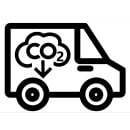In order to use this website you need to accept the use of Cookies , our Privacy Policy , and our Terms and Conditions.

Want access to a world of information? Join our Cannabis Growers Club! Here you will be able to learn more about growing cannabis as well as get some great tips and tricks from fellow growers to take your growing skills to the next level.
TAKE ME TO THE CANNABIS GROWERS CLUB OF SOUTH AFRICA
Cannabis, like all plants, prefers certain environmental conditions to thrive. One of the biggest advantages of growing indoors is that growers can control their environment to suit their plants' needs. Humidity is one of the major factors that needs to be monitored and regulated to keep your cannabis plant healthy and strong throughout all the stages of growth.
Why is Humidity Control Important?
During every growth stage, a cannabis plant will have a constant need to intake water, the amount of water they need fluctuates with the humidity in your grow room. When the humidity is high, the cannabis plant will use its leaves to absorb moisture from the air which causes them to drink less water from their roots. When the humidity is low, the plant will pull more water in through their roots.
Since humidity changes how much water your plants take in, and the water you give your plants has nutrients in them, being in control of humidity gives you increased control over your plant’s nutrient intake.
Having the right humidity encourages strong, healthy, leafy plants with vigorous growth. It also helps to prevent plants being attacked by mould or bud rot which can be caused by high humidity.
Effects of Poor Humidity Control
As mentioned earlier, having high humidity can cause some issues for your plants. It is very important to manage your humidity properly. These are some effects poor humidity control can have on your cannabis plants:
White Powdery Mildew
White Powdery Mildew is a fungal disease that appears in high humidity environments. WPM can be prevented by ensuring there is proper airflow in your grow area and that leaves are not overlapping each other. Having small oscillating fans in the grow area works wonders.
Bud Mould or Rot
Bud rot or mould is one of the worst issues a grower can experience because of poor humidity management. It is extremely disappointing harvesting a dense cola only to find that the insides are totally white or brown with mould. Buds that have this condition are not usable and should be thrown away.
Nutrient Problems
Humidity is a factor that partly determines how much water your plants will drink. If the air is dry, your plants will tend to drink more from the roots. If they are already drinking more due to high temperatures, low humidity can cause them to drink a lot more water through their roots causing them to take in too high levels of nutrients. If a plant takes in more nutrients than it can use, the leaves will begin to show yellow or burnt tips because of nutrient burn.
Slowed Growth
Cannabis plants love high humidity when they are young and low humidity when they are mature. If they are not getting these conditions, they may not grow as fast or healthy as they could.
Humidity Guideline Table
Now that you know why it is important to manage humidity when growing cannabis, next you need to know what humidity to aim for. This table gives a general guideline you can follow.
|
Growth Stage |
Optimal Humidity |
|
Clones |
70% |
|
Vegetative |
40 - 60% |
|
Flowering |
40 - 50% |
|
Final Weeks of flowering |
40 - 45% |
Humidity is actually a measure of how much water vapour is in the air. There are a few different ways to measure humidity, such as absolute, specific, or relative humidity.
When growers talk about humidity in the grow room, they are referring to Relative Humidity or RH.
Humidity Basics for Each Growth Stage
Clones
Clones need time to develop their root systems to take in water. Young clones solely depend on getting their water through their leaves from the air, which is only possible with high humidity.
Keeping humidity levels high will greatly improve the chances of clones rooting and increases growth in clones. This is why many growers use humidity domes for their new clones.
The optimal humidity for clones is 70% RH.
Young and Vegetative Plants
Seedlings and young cannabis plants in the vegetative stage grow a lot of foliage in a great growing environment and can sometimes grow this foliage at a faster pace than the roots.
Plants are not only able to get water from their roots but can actually pull water vapour directly out of the air. Having a higher humidity allows the leaves to get more water if they need. Until your cannabis plant has fully developed its root system, low levels of humidity in the air can cause slower growth.
The optimal humidity for young and vegetative plants is 40-50% RH.
Flowering Stage
When the plant enters into the flowering stage, the humidity should be lowered to around 40-50%.
By this stage, your cannabis plant will have created a large root system for taking in water. They will also still be able to take in water through their leaves but its best to keep humidity levels low during flowering to prevent mould or mildews forming.
Mould is especially dangerous during the flowering stage as it can form on or inside your buds or colas without you noticing. Mould or bud rot can ruin your entire harvest and can spread quickly. If you do notice mould forming, you should check the entire grow room for more infected leaves and make sure to lower your humidity.
Even if the humidity is low, it is still important to have air moving over and through your plants. Small fans blowing over and under the canopy will keep air moving and prevent wet spots from forming on any parts of the plant.
The optimal humidity for flowering plants is 40-50% RH
Humidity and Temperature
Humidity and temperature are closely related. Relative humidity measures how much water is "being held" in the air compared to the maximum amount of water that can be held at that temperature.
Warm air can hold onto more water than cool air. Plants will thrive at different relative humidity depending on the temperature of the air. Once the air becomes too saturated with water, it tends to form a dew or film of water on the plant, which can lead to mould.
Temperature is just as important as humidity when it comes to growing plants. You will need to control both temperature and relative humidity at the same time to get the best results from your grow.
Cannabis likes a comfortable room temperature, or a little warmer, not too dry, and not too humid. Generally, cannabis prefers temperatures in the 21-27 degree Celsius range during the day when lights are on and when lights are off they are happy with slightly cooler temps.
However, if the temperature drops lower than 15 degrees Celsius, plant growth tends to slow down, and freezing temperatures can shock or even kill a cannabis plant.
How to Control Humidity in the Grow Room
1. Humidity and Temperature Monitor
All growers will need a way to monitor the humidity in the grow room. This is where a hygrometer comes in very handy. A hygrometer measure humidity, or more specifically, water vapour content in the air. There are also meters called Thermo-Hygrometer which measures both the temperature and humidity.
2. Check the guideline chart
You can always refer to the guideline chart above to determine if relative humidity is in the ideal range for the growth stage your plant is in.
3. Make adjustments to the humidity and/or temperature that is too high or too low
It is very common for growers to deal with too much heat and high temperatures. This is because grow lights can get very hot, and cannabis plants are often confined to small spaces.
The relative humidity of your grow area depends on where you live, as well as how you have chosen to construct your grow area. Many growers struggle with lowering their humidity because of the mass of leaves and foliage in a small grow area tends to cause humidity levels to increase.
Here are some ways you can lower or increase humidity and temperature in your grow room.
Humidity
How to Lower Humidity
Dehumidifier - this will help pull moisture from the air in a small area like a grow room or grow tent.
Increase ventilation - you can add a more powerful exhaust fan or otherwise improve your exhaust system. This increases the total amount of airflow in the grow area. Keep in mind this option will only work if the intake air has a lower RH than the air in the grow room.
Avoid over watering plants - very wet soil or a large amount of drainage water left in drip trays will tend to raise the humidity in the grow room.
Consider slight defoliation - very leafy plants will tend to raise the humidity, especially when there is not good ventilation or air flow. Leaves overlapping each other can also cause humid wet spots on the leaves which can cause mould.
How to Increase Humidity
Humidifier - this will help to add moisture into the air
Manually - you can manually increase humidity by using sprays bottles and by keeping the surface of the soil moist but not wet. You can also hang a wet towel or cloth in the grow room.
Temperature
How to Lower Temperature
Increase ventilation - you can add a more powerful exhaust fan or otherwise improve your exhaust system. This increases the total amount of airflow in the grow area. Keep in mind this option will only work if the intake air has a lower RH than the air in the grow room.
Air conditioner - this can help cool the air and will also tend to lower the relative humidity of the air
Light schedule - consider having "lights off during the day and "lights on" at night. For example, some growers have their lights turned on at night when it is cooler and keep the lights off during the hottest parts of the day.
How to Increase Temperature
Insulation - consider insulating your grow room or tent with something that holds in heat.
Bigger light - you can consider upgrading to a bigger grow light. This will mean more heat for your plants.
Heating mat - placing a heating mat under the plants can help make things warmer.
Some Final Notes on Controlling Humidity in the Grow Space
Invest in a hygrometer and thermometer to monitor and keep track of the humidity and temperature in the grow room. Cannabis likes a comfortable room temperature, or a little warmer, not too dry, and not too humid so as a grower you will need to create that perfect balance in their environment. Remember that if the humidity or temperature does go too high or too low, there are ways that you can still correct it so that you can keep your plants happy and growing healthy.

